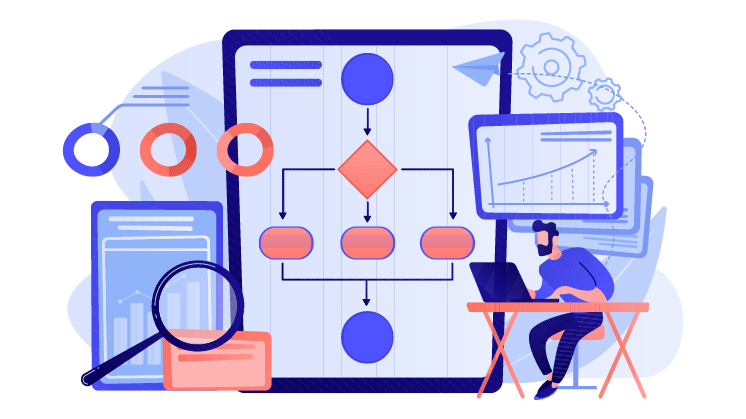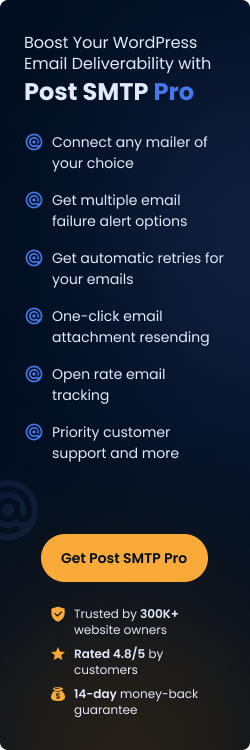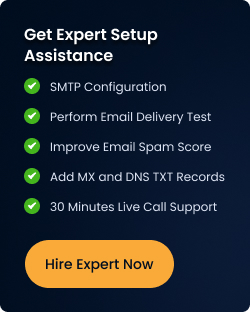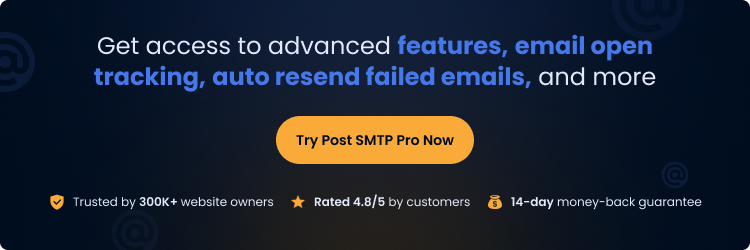As per the study, In 2020, email marketing revenue stood at 7.5 billion U.S. dollars; by 2023, this figure is set to cross the 10-billion-dollar threshold.
Email marketing automation is a powerful tool to help businesses grow and reach their target audience with personalized and timely communication. By automating email campaigns, companies can save time and resources while increasing their reach and engagement.

This article will discuss tips for using email marketing automation to grow your business and drive results. We will explain some key benefits for getting the most out of your email marketing automation efforts.
Email Marketing Automation – The Concept
Email automation is a process that involves the utilization of automated email messages triggered by specific events or actions. The steps can be new subscriber sign-ups or customer purchases. The automated email messages are highly customizable and can be personalized to resonate with the customer’s behavior, interests, and preferences.
Email marketing automation streamlines sending these emails, requiring minimal sender involvement. Automated workflows are established, and when a customer completes a specific action, such as signing up for a free lead magnet or making a purchase, they will receive a series of pre-scheduled emails.
Email Marketing Automation – Benefits
Email marketing automation has become an essential tool for businesses looking to streamline their marketing efforts and connect with customers in a personalized and efficient manner. Here are some key benefits of email marketing automation:
Increased efficiency and time savings
Email marketing automation allows businesses to create and schedule email campaigns in advance, saving valuable time and resources. Automated campaigns can be triggered by specific events such as sign-ups, purchases, or website visits, allowing businesses to stay engaged with customers without requiring consistent manual intervention.
Increased revenue and conversions
Email marketing automation can help businesses increase revenue and conversions by delivering timely, personalized customer messages at key customer journey stages. Automated campaigns help promote products, cross-sell or upsell, and encourage customer loyalty and repeat purchases.
Better tracking and reporting
Email marketing automation platforms offer detailed monitoring and reporting features that enable businesses to monitor success and make data-driven decisions. Analytics such as open rates, click-through, and conversion rates can provide valuable insights into customer behavior and preferences. Overall, it enables businesses to optimize their campaigns to get maximum impact.
Enhanced customer experience and engagement
Email marketing automation can improve customer experience and increase client engagement by delivering targeted, personalized messages. Automated campaigns help lure new customers, educate them about products or services, and offer continuous support throughout the buyer’s journey.
Difference Between Email Marketing Automation and Drip Email Campaign
| Automated Email Campaign | Drip Email Campaign |
|---|---|
| Sends pre-written emails triggered by specific events or actions | Sends a series of pre-written emails over a period of time |
| Typically used for welcome emails, order confirmations, and abandoned cart reminders | Typically used for lead nurturing, onboarding, and customer retention |
| Follows a linear sequence of emails based on the specific event or action that triggers the campaign | Emails are sent based on a predetermined schedule or triggered by specific actions |
| Less flexible and customizable than drip campaigns | More flexible and customizable than automated campaigns |
| Often used for transactional purposes | Often used for building relationships and engagement over time |
| It can be used as a standalone email marketing strategy or in combination with other types of campaigns | Can be used as a standalone email marketing strategy or in combination with other types of campaigns |
Tips for Business Growth Using Email Marketing Automation
1- Plan Workflow Before Time

Workflow planning consists of two parts:
- Planning of workflow types you need to implement and identifying the target audience
- Planning individual workflow structure
It’s crucial to plan your workflow types to ensure your measures align with your objectives. For instance, this can be determined right away before you start going in deeply if you intend to add more emails for client retention, but all of your workflow plans are for potential customers still in the process of knowing your product.
Before accessing the marketing automation application, begin workflow planning by outlining each workflow in advance on the document, with all the messages identified and branching pathways drawn with lines linking to each letter. Workflow in a visual representation can also help you for quick reference.
2- Identity Target Audience

Customers now expect personalized offers addressing their unique digital age concerns. By defining your target audience, you can develop email campaigns that appeal to your particular clients. Your target audience is anyone likely to use or purchase your goods or services. It would help if you investigated your clients’ interests, motives, pain areas, and preferences to determine your target audience.
To know your target audience better, take into account the following questions:
- What is the geographic location of your target audience?
- What is the income range of your target audience?
- In what ways does your target audience use your products or services?
- What level of education does your target audience typically have?
- What are the primary challenges faced by your target audience?
- Where does your target audience typically find content online?
3- Customized Email Content
Automation does not equate to emails lacking humanizing qualities. Instead, since the person sending the message is no longer required to individually address each of the hundreds or thousands of emails sent, automation makes it much easier to personalize emails.
You can raise their open and engagement rates by personalizing the subject lines, senders, and your email body content. If the recipients aren’t opening your emails, even if you create the ideal workflow with an astounding amount of branching routes, that will be fine.
4- Provide Valuable Email Content
Any business should strive to increase sales. However, this does not imply that you should write your email communications with the intention of making money rather than adding value. There are a lot of businesses that appear daily in a customer’s inbox.
As per the study, People receive 121 emails every day on average. Because the content of many emails doesn’t add value to the recipient, conversion rates are very often low.
Audience-specific information in your emails is the best approach to offer value to your recipients. A compelling email should tell a story and demonstrate how your business can help readers with their difficulties. It should also have intriguing subject lines, be easy to read, and refrain from using technical terms that people find hard to understand.
5- Get an Email Marketing Automation Service
Time-saving automated software solutions are always a smart choice, from safe invoicing options to email automation services. You will need essential automation services, such as sending payment reminders and providing automatic credit card billing, to be integrated with your email service while managing your finances and accounting. MailChimp and Constant Contact are the few email marketing automation tools that can help you save time.
Also, you can take the help of a WordPress plugin like Post SMTP that offers a feature called Fallback Mailing. Fallback Mailing helps you if the primary socket fails to send an email; the system tries sending it with a secondary socket. So you remain safe in case your email service gets disrupted.
6- Conduct A/B Testing
A/B testing, also called split testing, is an email marketing technique that enables you to evaluate the performance of a marketing campaign. A/B testing compares two emails side by side to see which performs better. You can test a number of different factors with A/B testing, including CTAs, music, video, and photos.

Here is an illustration of how A/B testing functions in email marketing automation:
Consider you have two subject lines for one email content, and you want to analyze which one performs better. Send the first group one headline and the second group the other. You will evaluate engagement numbers throughout the campaign to decide which email is more successful.
7- Assess the KPIs of Your Email Marketing
You can benefit from spending time and resources on email marketing initiatives. Increase your subscriber base and produce more leads. Alternatively, you could turn prospective consumers into repeat businesses.
Whatever your goals, you need a mechanism to assess the effectiveness of your email marketing initiatives. Identifying the most effective marketing strategy with well-defined KPIs will be easier.
Following are some popular and regularly used KPIs:
- Open rate
- Conversion rate
- Bounce rate
- Click through rate
Wrap Up
Using email as a marketing tool has gained significant popularity due to its global reach and proven effectiveness. Although acquiring proficiency in engaging customers requires time, mastering the art of email marketing automation will yield tremendous benefits for your company. Begin implementing these suggestions immediately to optimize your business’s impact and enhance its online presence.
FAQs
-
What is email marketing automation?
Email marketing automation uses software to automate and streamline email campaigns, delivering targeted and personalized messages to subscribers based on predefined triggers and workflows. It saves time, increases efficiency, and improves the effectiveness of email marketing efforts.
-
Can email marketing automation be personalized for each individual customer?
Yes, email marketing automation can be personalized for each customer by utilizing customer segmentation, dynamic content, and personalization tags.
-
How do I set up email marketing automation for my business?
– Select a reliable email marketing platform with automation features.
– Define your goals for email marketing automation.
– Build an email list of opt-in contacts.
– Plan and segment your email campaigns.
– Set up triggers, create workflows, personalize content, and continuously monitor and optimize your automated email campaigns.



